Planning your own trip? Prepare for your trip
Use Rough Guides' trusted partners for great rates
Plan and book your private, tailor-made tour with vetted local experts
Peniche is a working fishing town first, tourist hub second. The harbor is still alive with fishermen mending nets, even if the waterfront restaurants are now aimed squarely at visitors. Every August, the Festa de Nossa Senhora da Boa Viagem takes over the streets with fireworks, music and a blessing of the fishing fleet. Once an island, Peniche was joined to the mainland in the fifteenth century and today stretches across a low isthmus flanked by wide sandy beaches. The town itself won’t win any beauty prizes, but the walled center has narrow lanes, a hulking seaside fortress and plenty of maritime grit. From the marina, boats head out to the wild Ilha da Berlenga, while surfers come for the Atlantic swells that crash along Baleal and Supertubos, two of Portugal’s best beaches. Peniche also makes a good jumping-off point for Atouguia da Baleia and its church tied to whaling history.

Hello, I’m Sara, your Portugal travel expert, and I want to introduce you to Peniche. This fishing town lives and breathes the ocean, from the boats in the harbor to the surfers riding the Atlantic waves. Peniche is one of those places that sticks with you. It’s not postcard-pretty, but it doesn’t pretend to be. This is a fishing town where the smell of grilled sardines drifts through the harbor, surfers chase world-class waves, and boats set off daily to the windswept Berlengas Islands. Inside the old town walls, you’ll find cobbled streets and a fortress that once housed political prisoners. Along the isthmus, beaches roll out in both directions, making Peniche a true mix of sea, salt, and surf culture. This Peniche travel guide gives you the essentials: how to get here, what to see, and where to stay. No matter if you’re here for Supertubos’ thunderous waves, the seafood, or a boat trip to Berlenga, Peniche is best enjoyed with sandy feet and salty hair.
Sara’s tip
Take the morning boat to Berlenga Grande. Hike to the São João Baptista fortress before the crowds arrive, then swim in the turquoise coves when the sun is high.
Best time to visit
How to get to Peniche
Peniche is about 100 km north of Lisbon. Buses run frequently from Lisbon’s Sete Rios station and take around 1 hour and 45 minutes. Driving is faster and gives you flexibility for nearby beaches and villages. There’s no train service, so bus or car are your option.
Best areas to stay in Peniche
Peniche lies on Portugal’s Atlantic coast, around 100 km north of Lisbon, and is joined to the mainland by a narrow isthmus with beaches on both sides. Once an island, it’s still very much a town shaped by the sea, with fishing boats in the harbor and surfers chasing waves along the shore.
Often listed among the best places to visit in Portugal, Peniche makes an easy escape from Lisbon but rewards a longer stay. From here, you can take a boat to the Berlengas Islands, explore the medieval streets of nearby Óbidos, or simply spend your days hopping between some of the country’s best surf beaches.


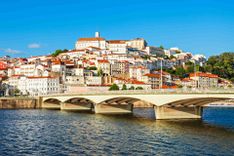
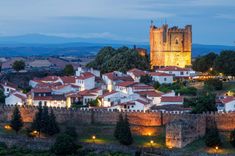

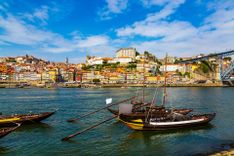










Peniche is small enough to explore in a day, but spread out enough that you’ll need to think about how you move around. The harbor, old town, and fortress are all within walking distance, while the beaches and Baleal sit a few kilometers away. To reach surf spots, viewpoints, or villages beyond, you’ll need wheels.
If you’re asking how many days in Peniche are enough, you can see the main highlights in a single day: wander the walled old town, visit the fortress, stroll the harbor, and take in the cliffs at Cabo Carvoeiro. Surfers can head straight to Supertubos or Baleal, two of Portugal’s most famous breaks, and still be back in time for grilled sardines by the marina.
But if you can, stay at least two nights. That gives you time to take a boat trip to the Berlengas Islands, explore more of the beaches, and enjoy the town once the day-trippers have gone. The evenings are relaxed, with beach bars in Baleal buzzing until late in summer.
If you’re planning a longer Portugal itinerary, three days in Peniche works well. You’ll have one for the town, one for surfing or beach-hopping, and one for a boat trip or a side visit to Óbidos.

Surfing in Peniche © Shutterstock
Peniche has plenty of places to stay, from surf hostels and simple guesthouses to boutique hotels by the sea. Where you base yourself depends on whether you want nightlife, waves, or a quieter retreat.
Peniche may look rough around the edges, but that’s part of its appeal. It is a fishing port with a fortress past, world-class surf, and windswept cliffs that remind you this is the edge of Europe. Here are the best things to do in Peniche, with time to really take them in.
Built in the 16th century to fend off pirates, the fortress later became one of Portugal’s most infamous prisons. Under the Salazar dictatorship, political dissidents were held here in harsh conditions, and the museum today preserves both maritime history and the stories of resistance. The most daring was a 1960 jailbreak that embarrassed the regime and became legendary. Standing on the ramparts, you can take in views of the Atlantic and the fishing harbor, but the real impression comes from walking through the stark cells and corridors that once held prisoners. Allow at least an hour to let it all sink in.
The Berlengas lie 10 kilometers offshore and feel like another world. Berlenga Grande, the main island, is all jagged cliffs, turquoise water, and seabirds circling above. Boats leave from Peniche’s marina from late spring to early autumn, and the ride itself can be part of the adventure with swells that remind you how powerful the Atlantic really is. Once ashore, you can hike to the lighthouse, swim in clear coves, or cross the narrow stone causeway to the São João Baptista fortress, perched on the rocks like something out of a fantasy film. For the best experience, stay overnight at the small guesthouse or campsite and enjoy the island after the last boat departs.
Supertubos is one of Europe’s most famous surf breaks, a place where waves curl into powerful tubes that challenge even professional surfers. Each October, the World Surf League stops here, but the beach is worth visiting year-round. On good days, you can watch surfers vanish into roaring barrels, while on quiet days the dunes offer a windswept walk along one of Portugal’s most dramatic stretches of sand. Even if you never plan to stand on a board, you will find yourself caught up in the energy of the place.
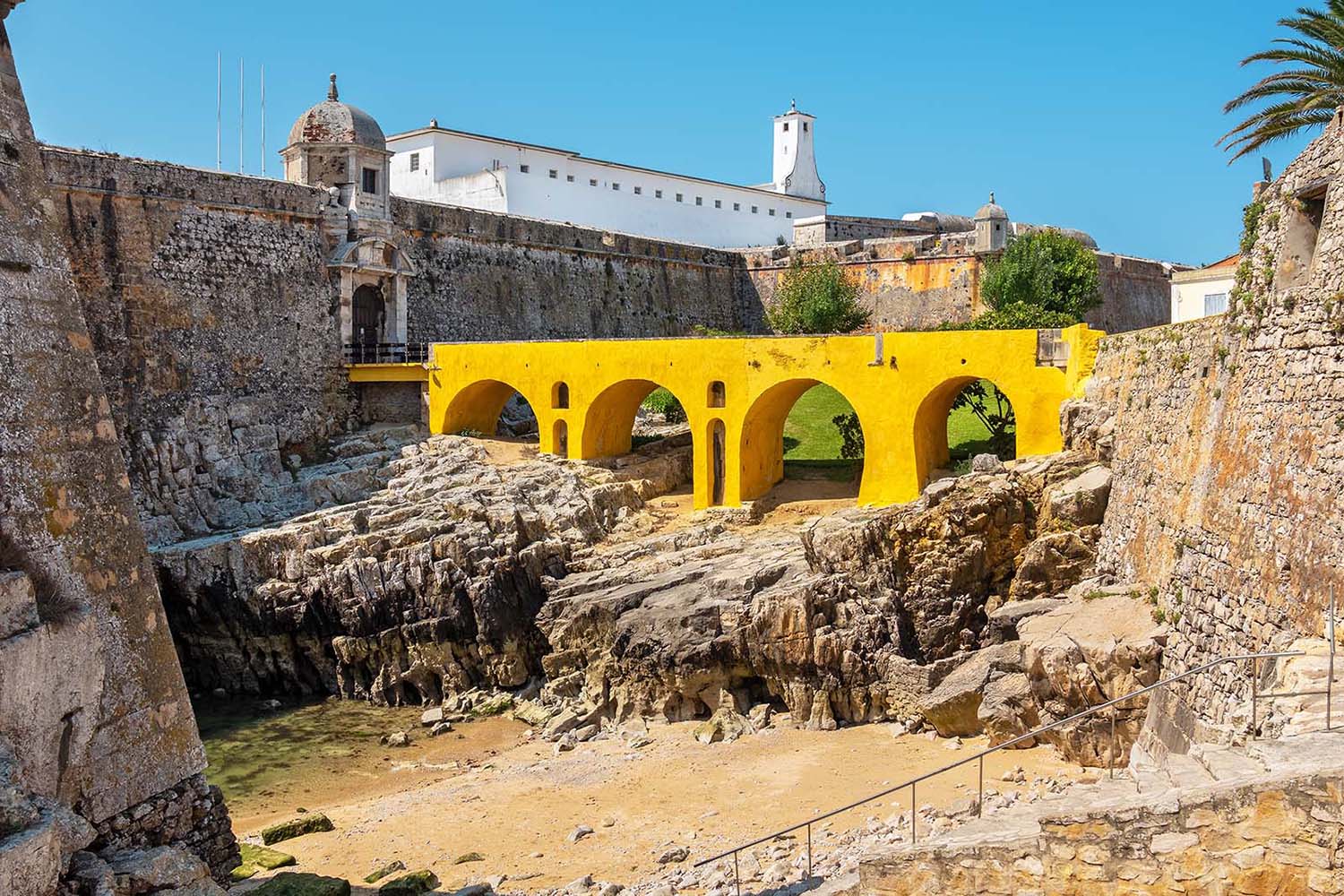
Vew to Fortress of Peniche (Fortaleza de Peniche). Peniche, Leiria district, Portugal © Shutterstock
Cabo Carvoeiro marks the western edge of the Peniche peninsula, a headland of crumbling limestone cliffs carved by centuries of waves. Strange rock formations rise from the water, including the Nau dos Corvos, which resembles a ship turned to stone. Stormy days are thrilling, with spray exploding against the cliffs, while sunsets here are unforgettable as the horizon glows red and orange. There is also a lighthouse still in use, standing guard over one of the most dangerous stretches of coast in Portugal. Even in summer, the wind here has teeth, so bring a jacket.
Peniche’s old town is enclosed by thick 16th-century walls, a reminder that this was once a fortress town constantly under threat. Inside, the streets are narrow and winding, lined with whitewashed houses, tiled doorways, and small chapels that tell of centuries of everyday life. The harbor is never far, and you will often see fishermen repairing nets while the smell of grilling sardines drifts through the lanes. It is not a polished historic center like Óbidos, but it feels lived-in and authentic. Take your time, stop for a coffee in the main square, and let yourself get pleasantly lost.
A few kilometers north, Baleal sits on a sandy headland connected to the mainland by a narrow causeway. On one side, you find calmer waves suitable for beginners, on the other, more challenging breaks for experienced surfers. The beaches stretch wide, perfect for long walks, sunbathing, or just watching the surf culture unfold. Between sessions, beach bars serve cold beers and sunset cocktails, and the atmosphere carries on late into the night in the surf hostels clustered nearby.
Peniche is famous for its lace-making, a tradition brought by women who sat for hours creating intricate patterns with bobbins. The local museum showcases delicate examples and explains the craft’s history, with occasional live demonstrations. It is a quieter, more unexpected side of Peniche, far removed from surfboards and fishing boats, but it offers a glimpse of the patience and artistry that have long been part of daily life here.
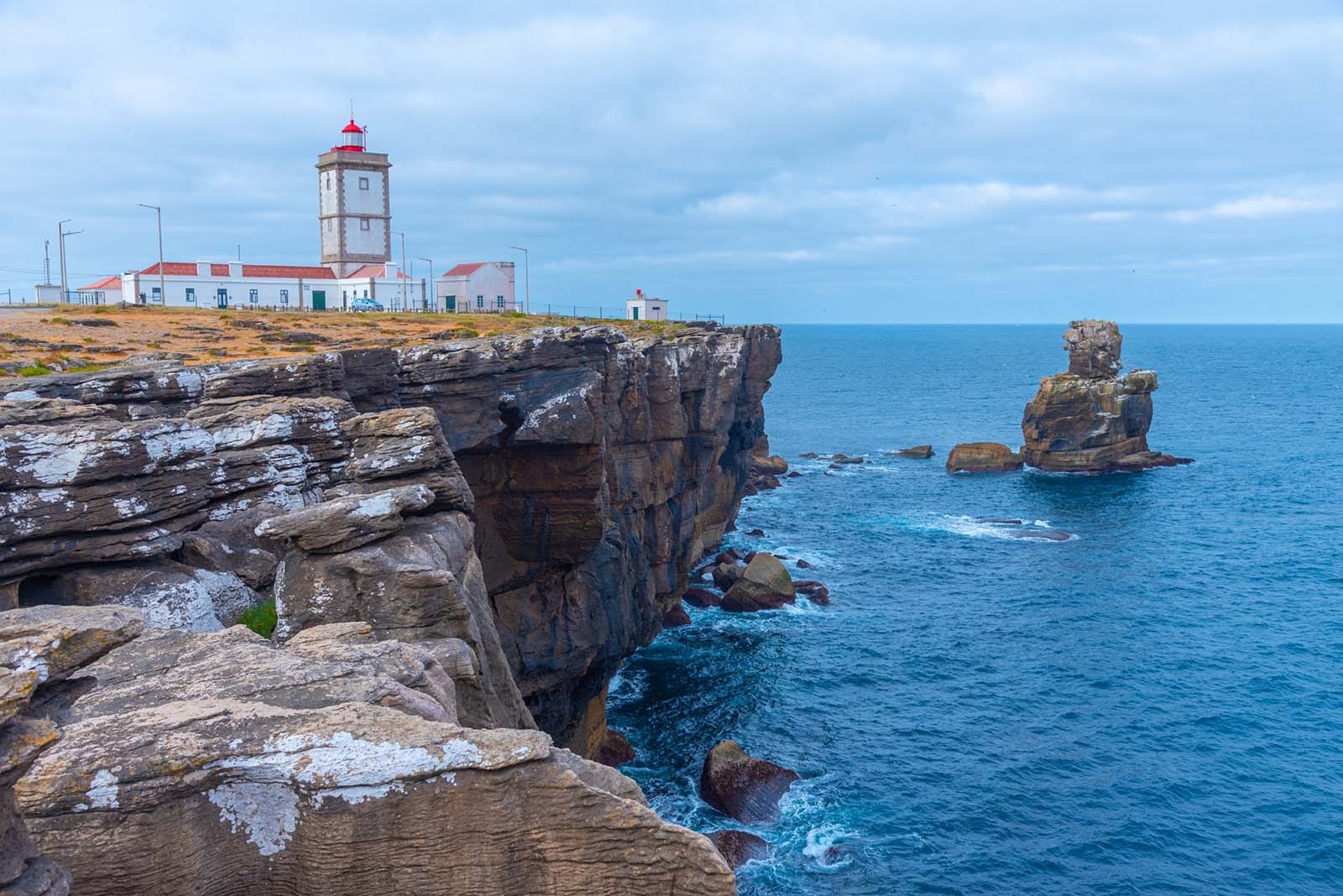
Cabo Carvoeiro cape near Portuguese town Peniche © Shutterstock
Food is one of Peniche’s great pleasures. The harborfront is lined with restaurants grilling sardines, serving steaming plates of seafood rice, or ladling out caldeirada, a fisherman’s stew rich with the catch of the day. Menus change with the season and the tides, which means whatever is on your plate was probably landed hours before. Skip the fancier spots and head to smaller family-run tascas where the atmosphere is casual and the wine comes in carafes.
Just 25 kilometers inland, Óbidos is a walled medieval town of cobbled streets and whitewashed houses. It is a complete contrast to salty, rough-edged Peniche. Spend a morning walking the castle walls, sipping cherry liqueur served in chocolate cups, and browsing bookshops tucked into old chapels. The town can be busy in high season, but arriving early or late lets you enjoy it without the worst of the crowds.
South of Peniche, Lourinhã is known as Portugal’s dinosaur capital. The museum here houses fossils and skeletons unearthed along the coast, including species found nowhere else. Panels explain how these giants once roamed what is now farmland and beach. If you are traveling with children, the fossil trails outside the town make for an educational walk, while Praia da Areia Branca nearby is a good spot to end the day with a swim.
Peniche has a mild Atlantic climate, with cooler summers, wetter winters, and plenty of wind. Unlike inland towns, temperatures here are moderated by the ocean, so you rarely get extremes. Summers rarely climb above the mid-80s°F (29°C), and winters usually hover in the 50s°F (12°C) during the day. What you will notice is the wind, which is almost constant, shaping the waves that make Peniche a surf capital. For current conditions, check IPMA (Portuguese Institute for Sea and Atmosphere).
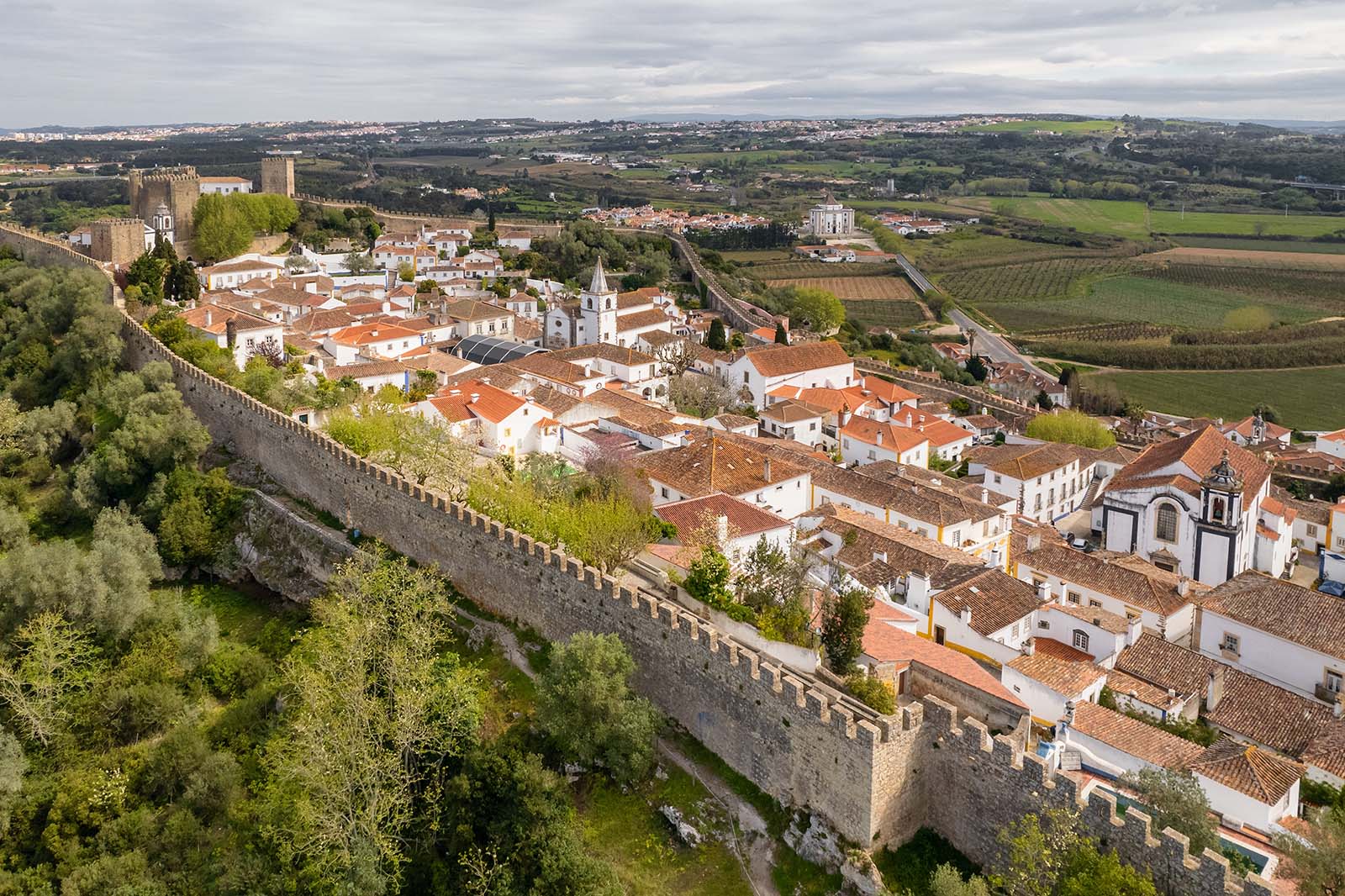
Aerial view of the historic walled town of Obidos, near Peniche, Portugal. Aerial shot of Obidos Medieval Town, Portugal © Shutterstock
Peniche’s food scene reflects its fishing heritage. Menus are built around the catch of the day, cooked simply and served generously, with a few inland classics for good measure. Most restaurants are family-run, with a mix of no-frills tascas near the harbor and more polished spots overlooking the sea. This is the place to come hungry: portions are big, prices are fair, and freshness is guaranteed.
Here are some unique experiences we can arrange for your tailor-made Peniche trip: all private, flexible, and designed by our local travel partners.
Discover Portugal's most captivating stories
Use Rough Guides' trusted partners for great rates
written by
Olga Sitnitsa
Online editor at Rough Guides, specialising in travel content. Passionate about creating compelling stories and inspiring others to explore the world.